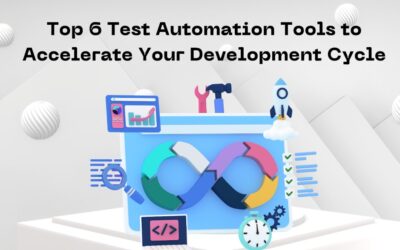Bringing your idea to life can be a challenging endeavor. As an entrepreneur, you may have a great idea that you are passionate about, but getting it off the ground can feel intimidating. This is where the Minimum Viable Product (MVP) concept comes in. Simply put, an MVP is a product that has only the essential features needed to be sold or tested in the market.
Developing an MVP helps you understand how customers perceive your idea and validate it before investing too much time and money into it. In this article, we’ll discuss the step-by-step process of going from an idea to an MVP. We’ll cover everything from defining your idea and understanding your target market to building a prototype and testing your MVP in the market.
We’ll also share tips on how to streamline your product development process and the mistakes to avoid when creating an MVP. Whether you’re a first-time entrepreneur or an experienced business owner, this guide will provide you with actionable insights to help you bring your idea to life.

1. Clarify the product vision
Before launching a Minimum Viable Product (MVP), it is essential to clarify the product vision. This step involves a comprehensive evaluation of your objectives, target audience, and product features. A clear product vision helps you to understand your motives for creating the product and allows you to prioritize your product features. It also ensures that the product meets your customer’s needs and solves their problems effectively.
By defining the product vision from the start, you will maintain consistency and direction as you move from the ideation phase to the development phase. Moreover, it helps steer the MVP’s production towards a successful launch, giving it a greater chance of being accepted by the market. In this first phase of the process, it is crucial to involve all stakeholders in defining the product vision, as this helps create a shared understanding of the product to be developed. If you’ve turned to an MVP development company for assistance in creating an MVP, then make sure to provide all the information from your stakeholders in a zip file, or organize a detailed call for sharing insights.
2. Define the target user
One crucial step in the process of developing a successful minimum viable product (MVP) is to clearly define the target user. This involves identifying and understanding the characteristics of the individuals who will benefit most from what you have to offer. By doing so, you can tailor your product to meet their specific needs, preferences, and pain points. To effectively define your target user, it is important to conduct market research, collect feedback from potential users, and analyze the competition.
This will help you develop a clear understanding of your target user’s demographics, behaviors, motivations, and pain points. Ultimately, this information will guide you in creating user personas, which represent the different segments of your target market and help you make informed product development decisions. By defining your target user, you can increase the chances of creating a product that meets the needs of your audience, which is essential for building long-term success.
3. Identify the minimum viable product
Defining the Minimum Viable Product or MVP is a crucial step towards bringing an innovative idea to life. It’s the simplest version of the product that can provide value to early adopters, while keeping development costs and time constraints in check. In a nutshell, identifying the MVP means figuring out the core functionalities that are essential for your product, and then building only those features that meet the minimum criteria to satisfy early customers.
By doing this, you can get your product into the market quickly, test its viability, and use the feedback to refine, iterate, and keep improving your offering. The key takeaway is to create an MVP that provides the most value with the least amount of work, eliminating any features that don’t directly contribute to the user experience. Overall, investing time in identifying an MVP can save you a lot of time and money in the long run, and help you launch a successful product with less risk.
4. Create a project timeline
Creating a project timeline is a critical step in turning ideas into a minimum viable product (MVP). A well-crafted timeline ensures that everyone involved in the project is on the same page regarding milestones, deadlines, and deliverables. Moreover, it helps keep the project on track and avoid delays, cost overruns, and scope creep. To create a project timeline, start by defining the scope of the project and breaking it down into smaller, more manageable tasks.
Then, estimate how long each task will take and prioritize them based on their criticality to the project’s success. Once you have a list of tasks and their timelines, assemble them into a Gantt chart or similar tool to visualize the overall project timeline. Keep in mind that the timeline is a living document that should be updated regularly based on progress and new information.
5. Test and refine the product before launch
One crucial step in the product development process is testing and refining the product before launch. This step involves creating a minimum viable product (MVP) and putting it through rigorous testing to get real-world feedback from users. By doing so, you can identify potential flaws in the product early on and address them before launch. This process also allows you to make informed decisions based on user feedback, which can improve the overall user experience and increase the chances of success. Before testing, establish a clear set of objectives, metrics, and testing techniques to guide the process. Incorporate user feedback into the development process, and try to make iterative improvements based on what you learn. Remember, a successful product launch is the result of diligent testing and refinement both before and after launch.
To sum it up, there are various steps to follow when it comes to developing an MVP. Starting with identifying the problem or need, the creation of a prototype, followed by user testing and feedback, and finally, building the minimum viable product. It’s important to always keep the user’s needs in mind and iterate frequently. Creating an MVP is not a one-time, linear process, but rather an ongoing iteration cycle that ultimately helps bring your vision to life. With this guide to follow, you can be confident in taking the necessary steps to turn your idea into an MVP.








0 Comments